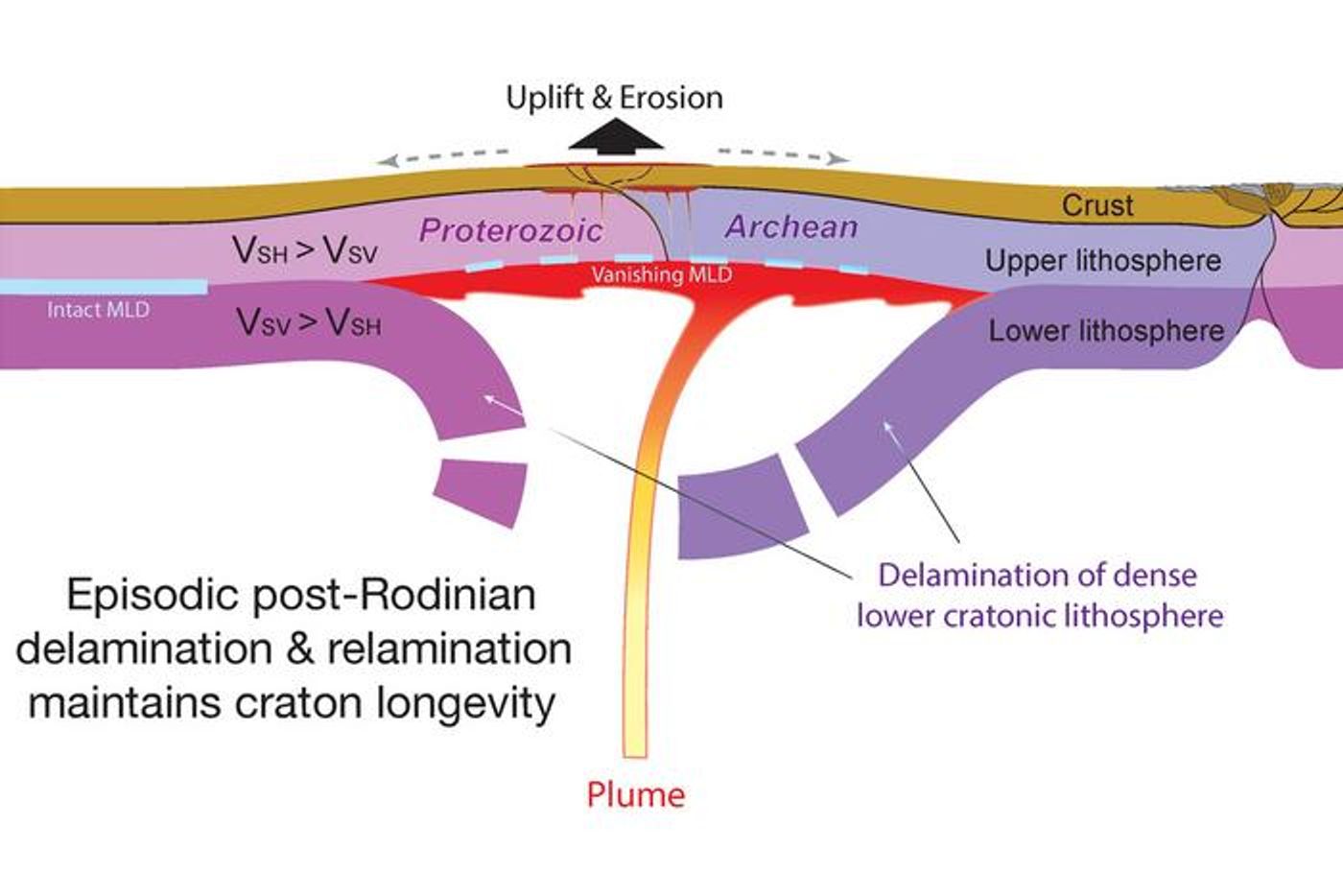Earth's Plate Tectonics Theory Defied in New Study
For decades, scientists have accepted a particular theory regarding the evolution Earth’s plate tectonics, but a recent study published in Nature Geoscience could defy this as a team of researchers examine what is known as the cratons that reside between the Earth’s upper crust and its lithosphere, which consists of the brittle upper region of the crust and mantle. Cratons have long been known to be Earth’s oldest tectonic units, having lived through the breakup of the supercontinent, Pangea, and the older supercontinent, Rodinia.
“It is generally accepted that the cratons are protected by their thick underlying mantle roots, or keels, which are believed to be buoyant and strong and thus stable over time,” said Dr. Lijun Lui, who is a geology professor at the University of Illinois Urbana-Champaign, and a co-author on the study.
However, two studies from 2021 and 2022 conducted by Dr. Liu’s research group show these mantle keels are denser than previously thought, which questions the longstanding theory about their evolutionary processes.
For the 2021 study, the researchers used gravity field measurements to demonstrate that the lower regions of the cratons were denser than the upper portions, and the 2022 study questioned the longstanding theories regarding craton buoyancy, arguing that the high density of the lithospheric mantle means the cratons are lower than previous estimates. For this most recent study, the researchers demonstrated that after the breakup of a supercontinent from mantle upselling, also known as plumes, the high-density keels not only sink back into the Earth but also return to the lithospheric base, as well.
Illustrated cross-sectional view of the Earth’s crust and mantle that occurred when the supercontinent Rodinia broke apart, with a mantle plume inititating the process of the lower mantle peeling away. (Credit: Lijun Liu)
“This is reflected in the strong dependence of crustal thickness on lithospheric thickness, an observation never made before this study,” said Dr. Liu. “In particular, there are two major uplift and erosion events in the past, when supercontinents Rodinia and Pangea each separated, the former causing what is known as the Great Unconformity – a feature in the Earth’s rock record shows no evidence of new deposition, only deep craton erosion. This is the reason why we see pieces of ancient lower crust exposed at the craton’s surface today.”
Using computer models, the researchers were able to determine the craton crusts have been able to survive for so long due to their periodic deformation, with Dr. Liu noting this new research could change the overall views regarding both continental evolution and Earth’s plate tectonics theory, as well.
What new discoveries will scientists make about Earth’s plate tectonics in the coming years and decades? Only time will tell, and this is why we science!
Sources: National Geographic, Nature Geoscience, National Geographic (1), National Geographic (2), United States Geological Survey, Britannica, Illinois News Bureau, Geophysical Research Letters, Earth and Planetary Science Letters
As always, keep doing science & keep looking up!









